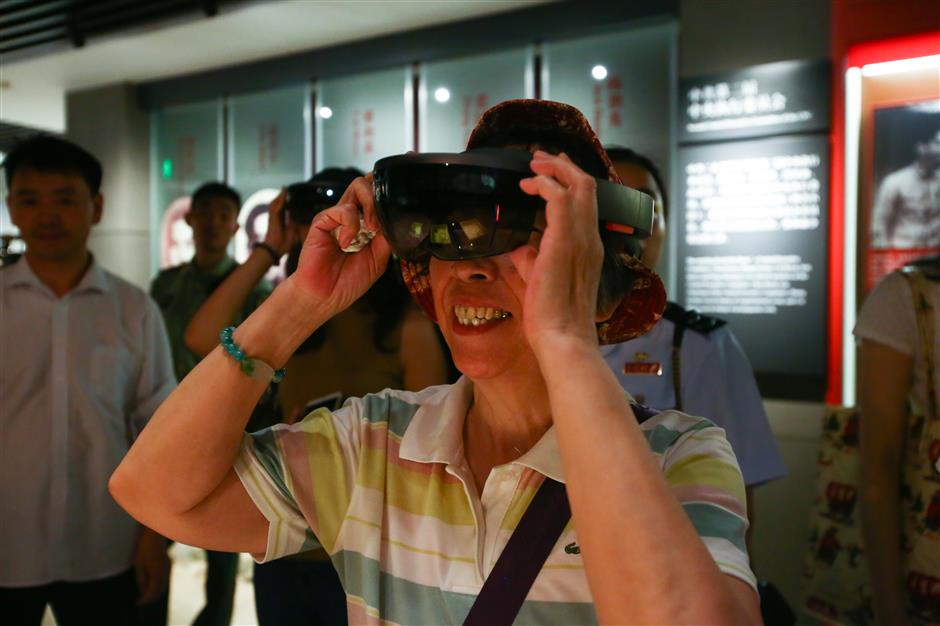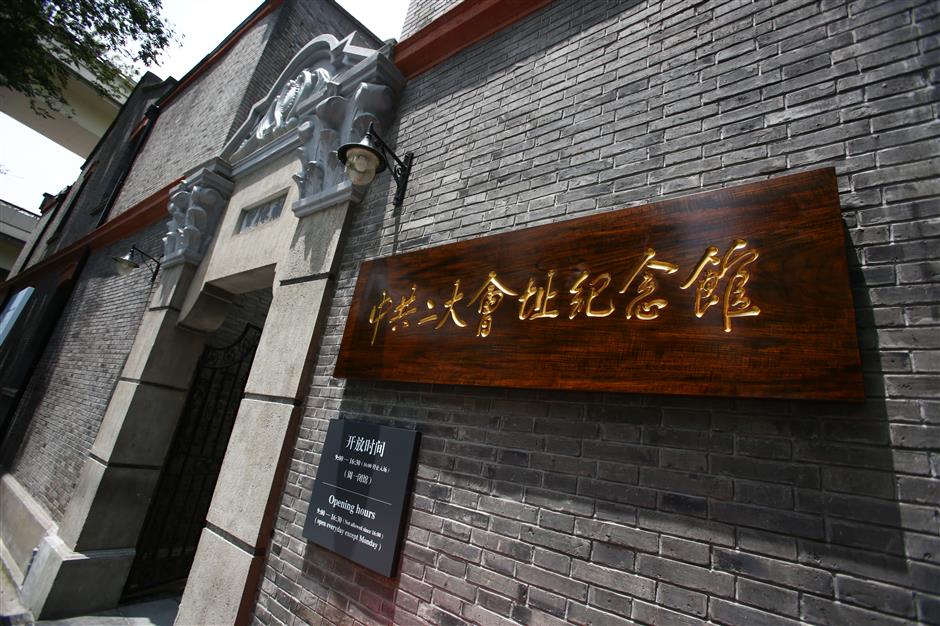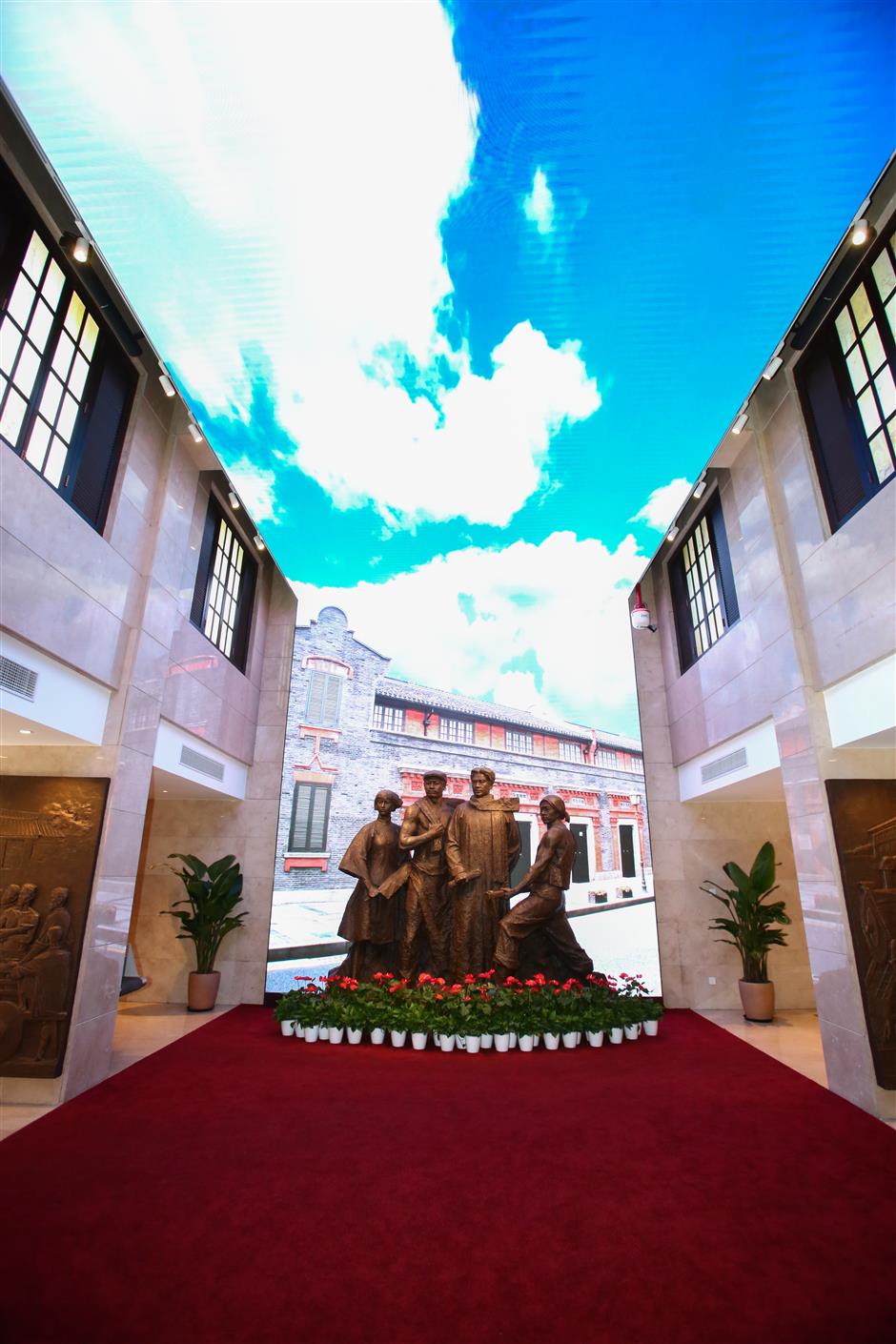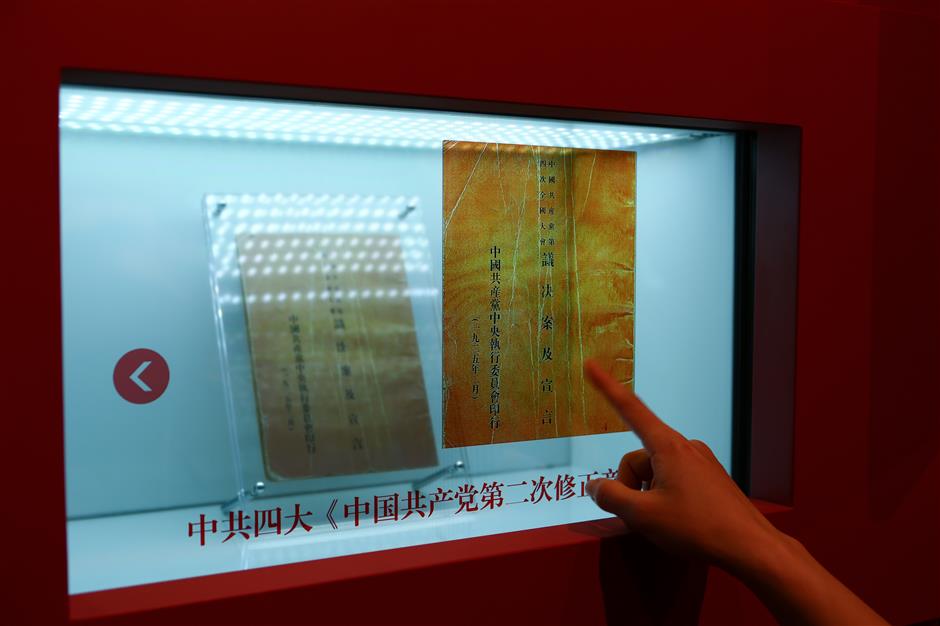New memorial museum presents history in a visitor-friendly format

A visitor views a virtual reality scene through an augmented reality headset at the Memorial and Museum of the Second National Congress of the Communist Party of China. The museum, like many other memorial sites and museums, is introducing new technologies to improve exhibit story-telling.
MEMORIAL sites and museums are all about storytelling, but telling a story so well that people are entranced is not always easy.
In the Hollywood blockbuster “The Night at the Museum,” the exhibits come to live to tell their tales. Now, interactive digital storytelling technologies are turning that far-fetched idea into practical reality.
One of those technologies relies on augmented reality. It has been deployed to great effect in the Memorial and Museum of the Second National Congress of the Communist Party of China, which has reopened in Jing’an after a four-month renovation.
This is a break from the stereotyped image of Party’s memorial sites, which are usually deemed dogmatic and old-fogey. Instead, the refurbished museum both educates and entertains in an engaging style that will resonate with visitors.
The first plenary session of Second National Congress of CPC, held in July 1922, is an important piece of Chinese history. It adopted the first Party Constitution.
In the reopened facility, visitors walk into a “living room” in a building styled in the traditional Shanghai shikumen architecture. The room features a traditional Chinese-style table and chairs.

The Second National Congress of the Communist Party of China
Visitors are given specially designed glasses that use augmented reality to create a mix of the real and digital worlds. Through computer-generated sensory input, visitors can see the Party Constitution appear above the table and flick through it automatically. Later in the presentation, early Party leaders who attended the session appear. They sit at the table and talk to each other.
The experience is dynamic, allowing visitors to actually see history as if they were participants.
“It’s very exciting,” said armed police officer Cai Chenhua, who visited the site. “I have never experienced augmented reality before. It helps me to better understand history.”
Another visitor, surnamed Zhu, was equally impressed.
“I got to see the actual setting of the Second National Congress of CPC, including items such as the teacups that were used by the participants. It felt as if I were there with them.”

Sculptures in the Second National Congress of the Communist Party of China
The memorial museum also has a giant LED screen stretching to the ceiling, 3D effects and some touch screens.
In the past, a Party flag was hung behind the bronze statues that represent a grassroots worker, farmer, woman and young student in the entrance hall. Now, the flag has been replaced by an LED screen, where visitors can see blue sky and scudding clouds. At certain times, videos of Party history will be played on the screen.
In a room opposite the hall, 3D holographic projection is used to tell a piece of rarely known history. Lights and words are projected on a model of the site that held the important Party meeting in 1922, along with an audio interpretation. The site was also the People’s Publishing House — the first secret publishing house of the Party — and the apartment of Li Da, one of the founding members of the Party.
“The site locates where the former International Settlement and French Concession met,” said You Wei, an official with the site. “Also, shikumen buildings were common in Shanghai and look very similar. So, it was a safe and secret place.”

Visitors can read the electronic versions of constitutions in various editions and in foreign languages by touching a glass screen in front of the original books.
Another highlight is the room of Party Constitutions. There, visitors can read the electronic versions of constitutions in various editions and in foreign languages by touching a glass screen in front of the original books.
You said they have managed to collect about 1,300 copies, and the exhibits will be changed from time to time. It will give the memorial the chance to constantly create new experiences to try to get people to visit more than once.
The memorial museum is open Tuesdays through Sundays, from 9am to 4pm.
Read more:
















